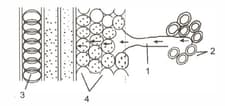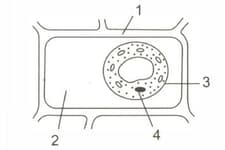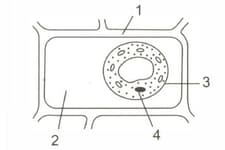Solved questions from ICSE board Examination papers
Sarita Aggarwal Biology Solutions for Exercise - Solved questions from ICSE board Examination papers
Simple step-by-step solutions to Solved questions from ICSE board Examination papers questions of Absorption by Roots from ICSE Biology Book 2 for Class 10. Also get 3D topic explainers, cheat sheets, and unlimited doubts solving on EMBIBE.
Questions from Solved questions from ICSE board Examination papers with Hints & Solutions
A candidate in order to study the process of osmosis has taken 3 potato cubes and put them in 3 different beakers containing 3 different solutions. After 24 hours, in the first beaker the potato cube increased in size, in the second beaker the potato cube decreased in size and in the third beaker there was no change in the size of the potato cube. The following diagrams show the result of the same experiment.
What is osmosis?
A candidate in order to study the process of osmosis has taken 3 potato cubes and put them in 3 different beakers containing 3 different solutions. After 24 hours, in the first beaker the potato cube increased in size, in the second beaker the potato cube decreased in size and in the third beaker there was no change in the size of the potato cube. The following diagrams show the result of the same experiment.
How does a cell wall and a cell membrane differ in their permeability?
The figure given below is a diagrammatic representation of a part of the cross section of the root in the root hair zone. Study the same and then answer the questions that follow:
Which is the process that enables the passage of water from the soil into the root hair?
The figure given below is a diagrammatic representation of a part of the cross section of the root in the root hair zone. Study the same and then answer the questions that follow:
Name the pressure that is responsible for the movement of water in the direction indicated by the arrows. Define it.
The diagram given below represents a plant cell after being placed in a strong sugar solution. Study the diagram and answer the questions that follow:
Name the structure that acts as a selectively permeable membrane.
The diagram given below represents a plant cell after being placed in a strong sugar solution. Study the diagram and answer the questions that follow:
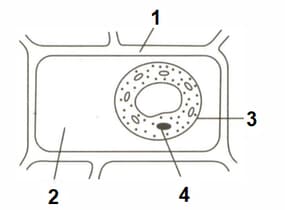
Label the parts numbered to in the diagram.
The diagram given below represents a plant cell after being placed in a strong sugar solution. Study the diagram and answer the questions that follow:
How can the above cell be brought back to its original condition? Mention the scientific term for the recovery of the cell.
The diagram given below represents a plant cell after being placed in a strong sugar solution. Study the diagram and answer the questions that follow:
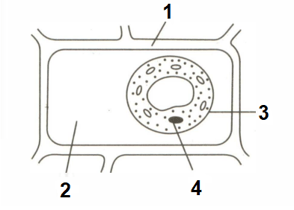
State any two features of the above plant cell which is not present in animal cells.




